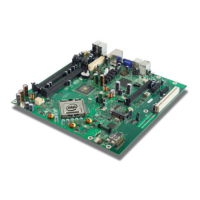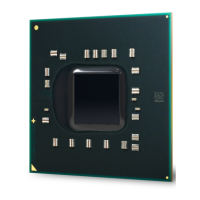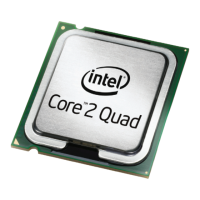Errata
Specification Update 21
Errata
AZ1. EFLAGS Discrepancy on a Page Fault after a Multiprocessor TLB
Shootdown
Problem: This erratum may occur when the processor executes one of the following read-modify-
write arithmetic instructions and a page fault occurs during the store of the memory
operand: ADD, AND, BTC, BTR, BTS, CMPXCHG, DEC, INC, NEG, NOT, OR, ROL/ROR,
SAL/SAR/SHL/SHR, SHLD, SHRD, SUB, XOR, and XADD. In this case, the EFLAGS value
pushed onto the stack of the page fault handler may reflect the status of the register
after the instruction would have completed execution rather than before it. The following
conditions are required for the store to generate a page fault and call the operating
system page fault handler:
1. The store address entry must be evicted from the DTLB by speculative loads from
other instructions that hit the same way of the DTLB before the store has
completed. DTLB eviction requires at least three-load operations that have linear
address bits 15:12 equal to each other and address bits 31:16 different from
each other in close physical proximity to the arithmetic operation.
2. The page table entry for the store address must have its permissions tightened
during the very small window of time between the DTLB eviction and execution of
the store. Examples of page permission tightening include from Present to Not
Present or from Read/Write to Read Only, etc.
3. Another processor, without corresponding synchronization and TLB flush, must
cause the permission change.
Implication: This scenario may only occur on a multiprocessor platform running an operating system
that performs “lazy” TLB shootdowns. The memory image of the EFLAGS register on the
page fault handler's stack prematurely contains the final arithmetic flag values although
the instruction has not yet completed. Intel has not identified any operating systems that
inspect the arithmetic portion of the EFLAGS register during a page fault nor observed
this erratum in laboratory testing of software applications.
Workaround: No workaround is needed upon normal restart of the instruction, since this erratum is
transparent to the faulting code and results in correct instruction behavior. Operating
systems may ensure that no processor is currently accessing a page that is scheduled to
have its page permissions tightened or have a page fault handler that ignores any
incorrect state.
Status: For the steppings affected, see the Summary Tables of Changes.

